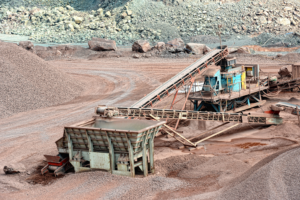Metallium (ex-MTM): Pivoting from Explorer to Tech Metal Recycler — What It Means for Investors

Australia’s MTM Critical Metals has undergone a dramatic transformation. It has rebranded as Metallium Ltd (ASX: MTM) (name change announced in 2025 via ASX filing), raised A$50 million (via an institutional placement announced in June 2025), and set out on a new course as a technology-driven metals recycler. The move takes it far beyond its roots as a critical-metals explorer. The company’s ambition now centres on commercialising Flash Joule Heating (FJH), an electrothermal method for extracting valuable metals from e-waste, scrap and mineral concentrates. Metallium is also expanding into the United States, where it plans to integrate its technology with Ucore Rare Metals’ RapidSX™ separation process. The shift could mark one of the more radical pivots seen on the ASX in recent years, but it also raises pressing questions for investors about risk, capital intensity and execution.
What are the Best ASX stocks to invest in right now?
Check our buy/sell tips
The Strategic Logic Behind Metallium’s Pivot
From Commodity Exposure to Technology Value
Pure exploration has always been a high-stakes game. It is capital-hungry, cyclical and heavily dependent on commodity prices. Companies often spend years defining resources only to sell to larger miners when capital dries up. Metallium’s decision to combine exploration with refining and recycling reflects a desire to move up the value chain. Rather than waiting for discoveries to turn into production, the company is betting on technology that can generate near-term revenue and higher margins. By entering the processing space, Metallium aims to capture more value per tonne and reduce its exposure to volatile market cycles.
Flash Joule Heating and Its Commercial Promise
The foundation of this new strategy is Flash Joule Heating. Unlike traditional smelting or acid leaching, FJH rapidly passes an electrical current through feed material, heating it to more than 3,000°C in milliseconds (as claimed in company disclosures). This extreme but controlled heat releases valuable metals while minimising chemical waste. Metallium believes the process can treat diverse inputs, from discarded electronics to rare-earth concentrates, with lower energy costs and fewer emissions. The method is also modular, allowing for smaller facilities close to feedstock sources rather than expensive centralised plants. Early research from Rice University, where the technology was developed, supports its potential for recovering rare-earth elements and critical metals with high efficiency.
Why the U.S. Expansion Makes Sense
There is a clear geopolitical rationale behind Metallium’s U.S. focus. Washington has prioritised domestic critical-metal processing to reduce dependence on China, and billions of dollars in federal funding are flowing into projects that strengthen supply-chain security. By situating its pilot and future commercial facilities in Texas and other U.S. states, Metallium gains proximity to both feedstock and customers in the electronics, defence and automotive sectors. Establishing operations inside the U.S. also positions the company to benefit from grants and incentives under the Inflation Reduction Act and Department of Defence programmes. It is, in effect, an attempt to embed the company directly into America’s emerging critical-materials ecosystem.
How Metallium Is Executing the Pivot
A$50 Million Capital Raise and Balance-Sheet Reset
The pivot required serious capital, and investors have stepped up. In June 2025, Metallium (then MTM) announced a two-tranche institutional placement raising A$50 million at A$0.55 per share (placement confirmed; oversubscription noted in company communication but not independently audited). According to company communications, the raise was reportedly oversubscribed, with participation from both Australian and U.S. institutions. Proceeds are earmarked for site development, R&D, feedstock procurement and working capital. Importantly, the raise gives Metallium enough runway to commission its pilot plant and advance its first commercial modules without immediate dilution pressure. Yet that same raise also resets expectations; shareholders will now demand visible progress and disciplined spending.
Building a U.S. Footprint
Metallium’s U.S. subsidiary, Flash Metals USA Inc., has secured its first site in Texas, where a demonstration plant (throughput target not yet publicly confirmed) is scheduled for commissioning in the first quarter of 2026. This facility will process high-value scrap and e-waste to validate throughput, recovery rates and operating stability. The company has also pursued lease options in Virginia and Massachusetts to support future expansion (these U.S. site options have been publicly announced). The Texas operation is intended as a proof-of-concept. If successful, the company plans to evaluate further deployment across key U.S. industrial regions. Metallium’s stated long-term goal is to develop a distributed network of modular FJH units serving multiple feedstock sources.
The Ucore Collaboration
Perhaps the most strategic step so far has been the binding technology-integration agreement with Ucore Rare Metals Inc. (TSXV: UCU). Under the deal, Metallium’s FJH process will supply purified mixed-rare-earth chlorides to Ucore’s RapidSX™ separation system at its Louisiana complex. The two companies will conduct joint testwork to demonstrate compatibility and efficiency before deciding on commercial terms such as licensing or tolling fees. If successful, the partnership would create an end-to-end U.S. supply chain, from recycled feedstock to separated rare-earth oxides, independent of Chinese processors. For Metallium, it offers not just validation but a clear pathway to monetisation.
Early Recognition from the U.S. Government
Adding to the momentum, Metallium has stated that its U.S. arm has been awarded a U.S. government contract (e.g. via SBIR or similar) to trial gallium recovery from LED scrap. In September 2025, Metallium announced a Phase I SBIR contract from the U.S. Department of Defence valued at A$100,000 to use its FJH technology to recover gallium from LED scrap and other gallium-rich waste streams (six-month project duration per company release). More important than the amount is the signal: Metallium’s technology has caught the attention of U.S. agencies tasked with securing the domestic supply of critical materials. A successful Phase I project could lead to larger, multi-million-dollar follow-on funding under Phase II. This foothold gives Metallium credibility in Washington and may strengthen its case for future government support.
Market Reaction and Valuation Rethink
How the Market Has Responded
Investors appear to have responded positively following the Ucore agreement. Share prices have risen, and the company’s implied valuation has increased. However, precise gains and market capitalisation estimates vary across sources and should be interpreted cautiously. Trading volumes increased significantly, and the company’s upgrade to the U.S. OTCQX market improved liquidity among North American investors. Market sentiment now hinges on the assumption that Metallium can deliver pilot success and secure commercial contracts. The re-rating is therefore both a vote of confidence and a measure of execution risk; optimism is high, but so are expectations.
Understanding the Valuation Premium
Traditional resource explorers are typically valued on resource multiples or exploration potential. Metallium no longer fits that template. Instead, it resembles an early-stage technology company with optional exposure to downstream revenues. Investors appear to be pricing in both a base value for its assets and a substantial “option premium” for the successful scale-up of FJH. Comparable recycling or extraction-technology firms that demonstrate commercial viability often command enterprise-value-to-sales ratios several times higher than those of explorers. However, if milestones slip or capital costs inflate, that premium can evaporate quickly. Metallium’s valuation is therefore highly sensitive to progress reports and pilot data.
The Risks That Could Derail the Story
The primary risks facing Metallium’s transformation revolve around technology, supply, regulation, capital, and intellectual property. The foremost uncertainty is whether its FJH system can perform reliably at an industrial scale; while laboratory results are promising, continuous operation introduces challenges in heat control, electrode durability, and maintenance costs that could undermine efficiency and margins. Beyond technical execution, Metallium must secure a consistent supply of e-waste and concentrates in a fiercely competitive U.S. recycling market dominated by players such as Umicore and Li-Cycle. Regulatory hurdles in the U.S. add another layer of complexity, as high-temperature chloride processes require strict environmental and safety approvals, any delays of which could push back its 2026 commissioning timeline (timeline based on company targets as of mid-2025). Financially, the A$50 million capital raise covers near-term goals, but large-scale expansion may require several hundred million dollars, meaning dilution risk remains if government or strategic funding does not materialise. Finally, the company’s competitive edge depends on its ability to safeguard the FJH intellectual property, originally developed in academia, against imitation or competing rapid-heating technologies, a critical factor in maintaining long-term value.
What Investors Should Watch Over the Next Year
The next 12 to 18 months will define whether Metallium’s story holds up under scrutiny. Investors should monitor the commissioning of the Texas pilot plant in early 2026 (target date per company presentation) and the first public data on recovery rates, operating costs and system reliability. Equally important will be progress on the Ucore integration; confirmation that FJH-produced chloride intermediates can be separated efficiently by RapidSX™ would validate Metallium’s entire value proposition. Any announcements of offtake or licensing agreements would further strengthen confidence. On the financial side, quarterly reports detailing cash burn and capital allocation will reveal whether management is delivering within budget. Finally, additional U.S. government contracts or grants would indicate that Metallium’s technology is gaining institutional traction.
The Investor Takeaway
Metallium’s evolution from a critical-metals explorer to a technology-focused recycler is one of the more ambitious reinventions seen on the ASX. The company is aligning itself with powerful global trends: the decarbonisation push, the rise of circular-economy industries, and the U.S. government’s drive for critical-material independence. The potential upside is undeniable. Some industry forecasts estimate that the rare-earth and critical-materials supply chain could reach tens of billions of U.S. dollars by the end of the decade (projection varies by analyst source).
Yet investors should remain clear-eyed. The company’s valuation already reflects optimism about flawless execution. Any delays in commissioning, technical setbacks or capital blowouts could reverse recent gains. Metallium’s future will depend not on the novelty of its technology but on its ability to operate profitably, secure feedstock and manage capital with discipline. For risk-tolerant investors, the next year offers a rare opportunity to watch a junior miner attempt to transform into a high-tech recycler. Whether it becomes a success story or a cautionary tale will hinge on results from the Texas pilot and the company’s capacity to turn innovation into sustainable cash flow.
FAQs
- What does Metallium’s name change signify?
The rebrand from MTM Critical Metals to Metallium Ltd reflects its strategic shift from exploration to technology-driven metal recovery, aligning its identity with its new commercial focus.
- When will the company start generating revenue?
Meaningful revenue is expected only after the Texas demonstration plant is operational in 2026 and commercial contracts or licences are secured.
- How important is the Ucore partnership?
The collaboration is central to Metallium’s strategy, providing a downstream pathway for FJH-processed material and aligning it with U.S. rare-earth-supply-chain policy.
- What is the biggest risk for investors?
Execution risk remains paramount. If the FJH system cannot scale commercially or if regulatory permits are delayed, the company’s valuation may suffer a significant downside.
- Is Metallium a long-term investment or a speculative trade?
At this stage, it remains speculative. The company offers significant upside for those comfortable with early-stage technology risk but carries equally substantial downside if milestones are missed.
Blog Categories
Get Our Top 5 ASX Stocks for FY26
Recent Posts
Channel Infrastructure NZ (ASX:CHI): Another Kiwi company just joined the ASX, but this one is the nation’s largest fuel supplier
Last Friday, Channel Infrastructure NZ listed on the ASX as a dual-listing. It is unlike the bulk of Kiwi companies…
Arafura Rare Earths (ASX:ARU) Nears FID With $1.35 Billion Secured- Time to Buy?
Arafura Rare Earths (ASX: ARU) presents one of the most puzzling setups on the ASX right now. The company has…



